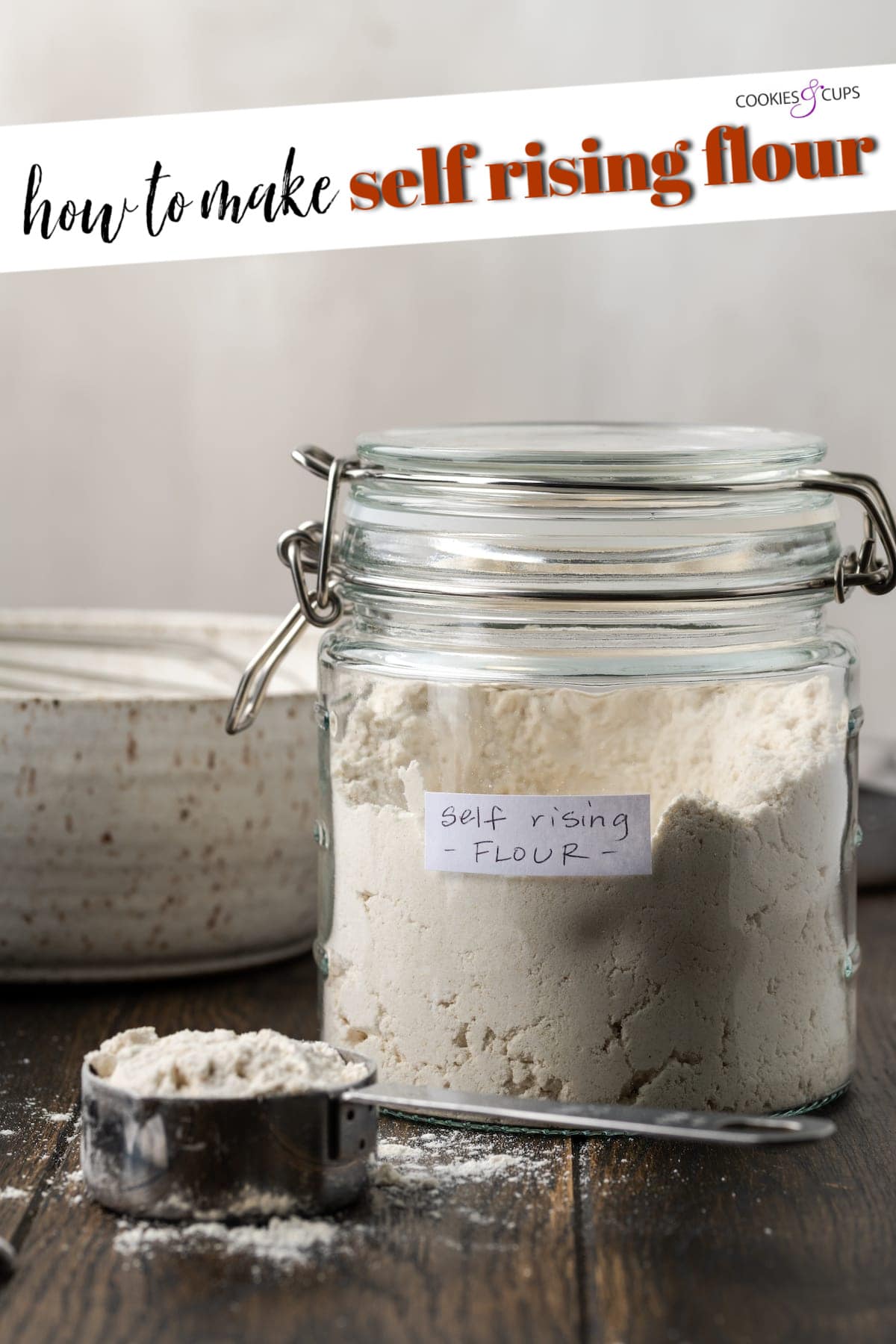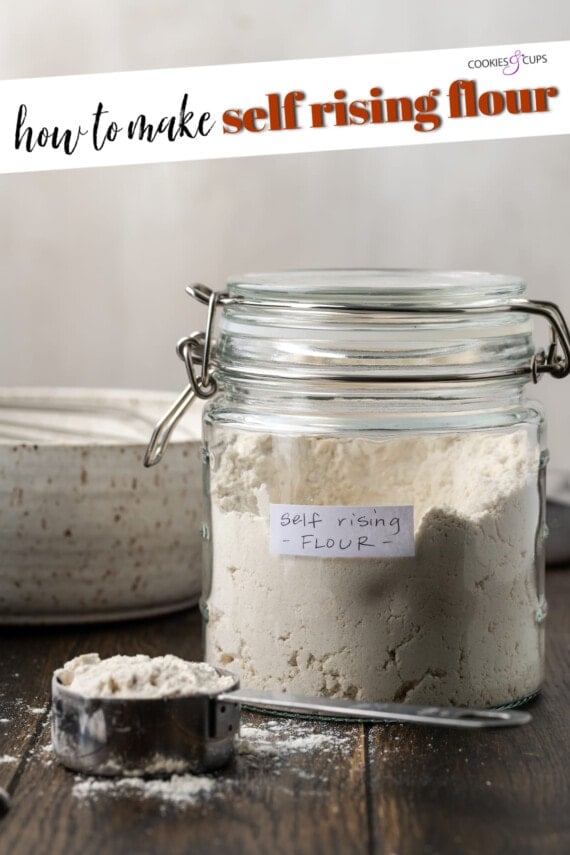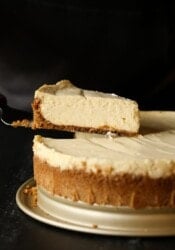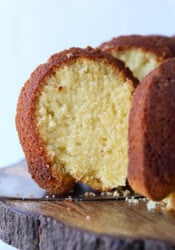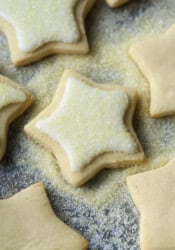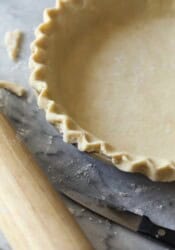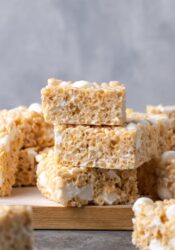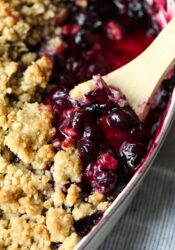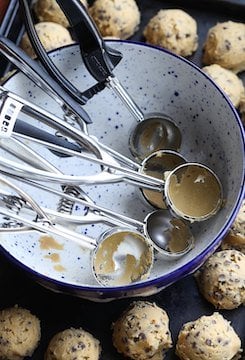Self-rising flour is a staple in loads of baking recipes. Learn how to make self-rising flour from all-purpose flour with this easy, 3-ingredient substitute!
Looking for more baking tips and easy substitutions? Check out how to make a buttermilk substitute and how to make cake flour, too!
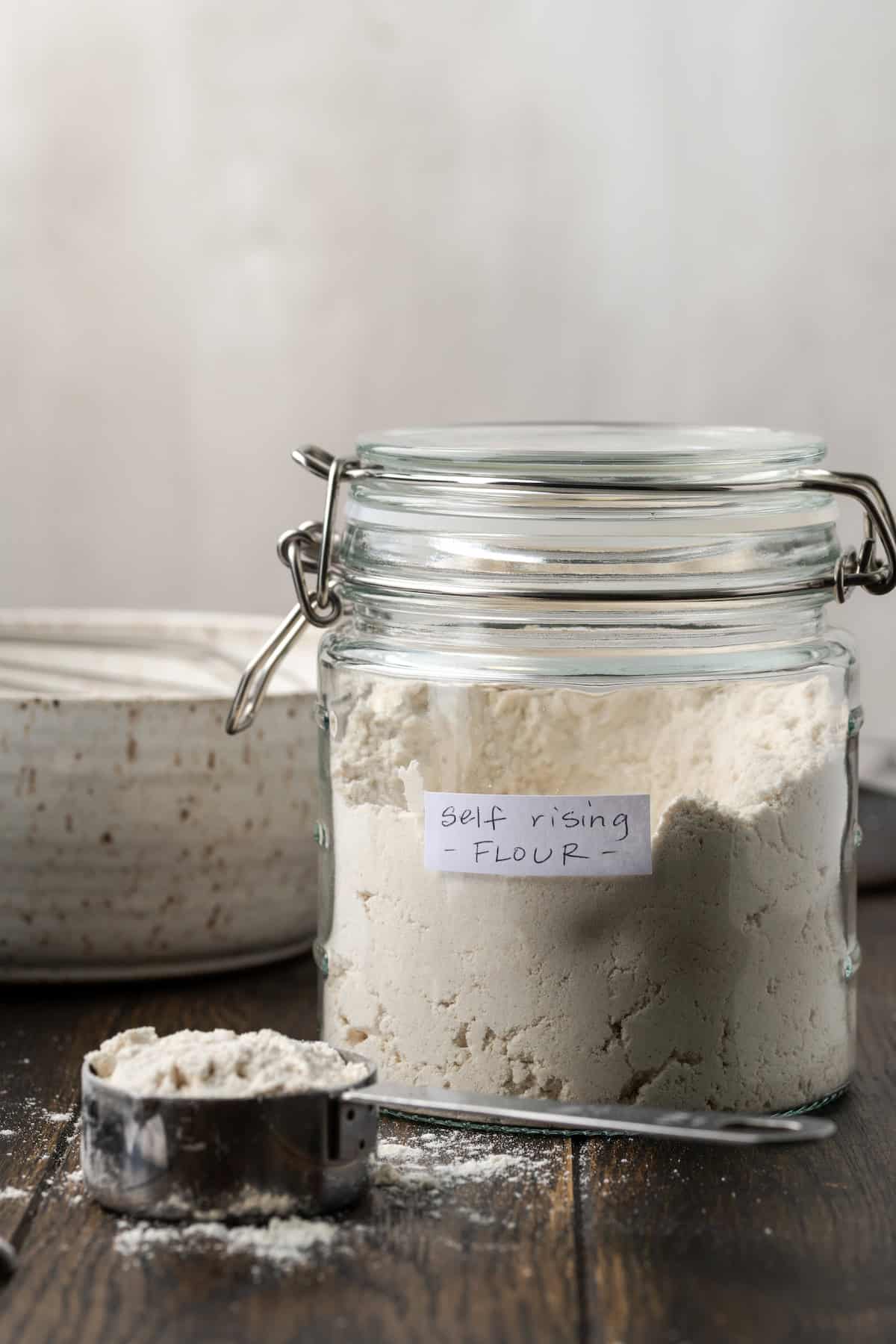
Why You’ll Love This Self Rising Flour Recipe
Wondering what self-rising flour is? Or maybe you have a recipe that calls for it, but you don’t have any on hand. I’m covering all the bases with this easy tutorial on how to make your own with only 3 ingredients! Here’s why you need this easy substitute in your life:
- Save an emergency trip to the store. The next time you run out of store-bought self-rising flour, it’s easy to make your own at home in a pinch.
- Great for baking. Self-rising flour is exactly what it sounds like, a kind of flour that helps baked goods rise without the addition of yeast or baking powder. There’s less measuring and mixing needed.
- 3 ingredients. If you have all-purpose flour, simply blend it with baking powder and salt – that’s it!
- Long-term storage. Have this substitute on hand in the pantry for all your favorite recipes. Stored airtight, it keeps for months!
What’s the Difference Between All-Purpose Flour and Self-Rising Flour?
Self-rising flour is similar to all-purpose, with one key difference: the former has salt and baking powder already included to act as a leavening agent. So, if you have a recipe that calls for this 3-in-1 ingredient, and you only have all-purpose flour in your pantry, you can make an easy substitute by adding the missing leavening. Here’s how to do it!

What You’ll Need
Check out the 3 pantry ingredients you’ll need along with some quick notes. Scroll down to the recipe card for a printable ingredients list.
- All-Purpose Flour – This homemade substitute starts with plain flour. You can also substitute half of the all-purpose with whole wheat flour if you’d like.
- Baking Powder – Make sure you’re using fresh baking powder and not baking soda, as they aren’t the same thing.
- Salt – Kosher salt or another fine salt is best.

How to Make Self Rising Flour
The next time you find yourself short of this ingredient, don’t panic. To make all-purpose flour self-rising, use this simple formula:
For every 1 cup of regular flour, combine with 1 ½ teaspoons of baking powder and ¼ teaspoon of salt. Whisk the ingredients together so that they’re evenly distributed. Voila!
Can I Substitute Self Rising Flour for All-Purpose Flour?
Sure! Self-rising flour can replace all-purpose flour in recipes that call for up to 1 teaspoon of baking powder per cup of flour. If your recipe requires more than 1 teaspoon of baking powder per cup of flour, you’ll need to add enough baking powder to make up the difference.
This substitute is useful in baking recipes such as pancakes, biscuits, scones, or similar. Since homemade self-rising flour is higher in protein, the results may not be quite as tender, but it works great in a pinch. And you may not even be able to tell the difference!

Tips for Success
This is such a simple baking hack to have on hand. It’s basically foolproof, but here are some final tips for the best results:
- Skip the salt. If you’re using this substitute in yeasted bread recipes or dinner rolls, leave out the salt.
- Measure the flour correctly. The best way to do this is with a kitchen scale. However, if you don’t have a scale, use the spoon-and-sweep method: spoon the flour from the bag into the measuring cup, and then level off the top with the back of a knife. Never scoop the flour directly from the bag, as you’ll end up with way too much.
- Check expiration dates. Fresh baking powder is essential. Check the dates on the labels to make sure that the baking powder you’re using hasn’t expired. If you’re unsure, you can check the baking powder’s freshness by adding a small amount to boiling water. If it’s nice and bubbly, you’re all set.
- Scale the recipe. I include how to make 2 cups in the recipe card at the end of the post. You can scale this basic recipe up or down as needed (see the formula above). You can choose to make exactly the amount you need or make a large batch and store the extras. Refer to the storage details later on.
- Don’t skip the baking soda. If a recipe calls for baking soda, don’t skip it! As we’ve established, baking soda has a different chemical makeup from baking powder, and they aren’t interchangeable.
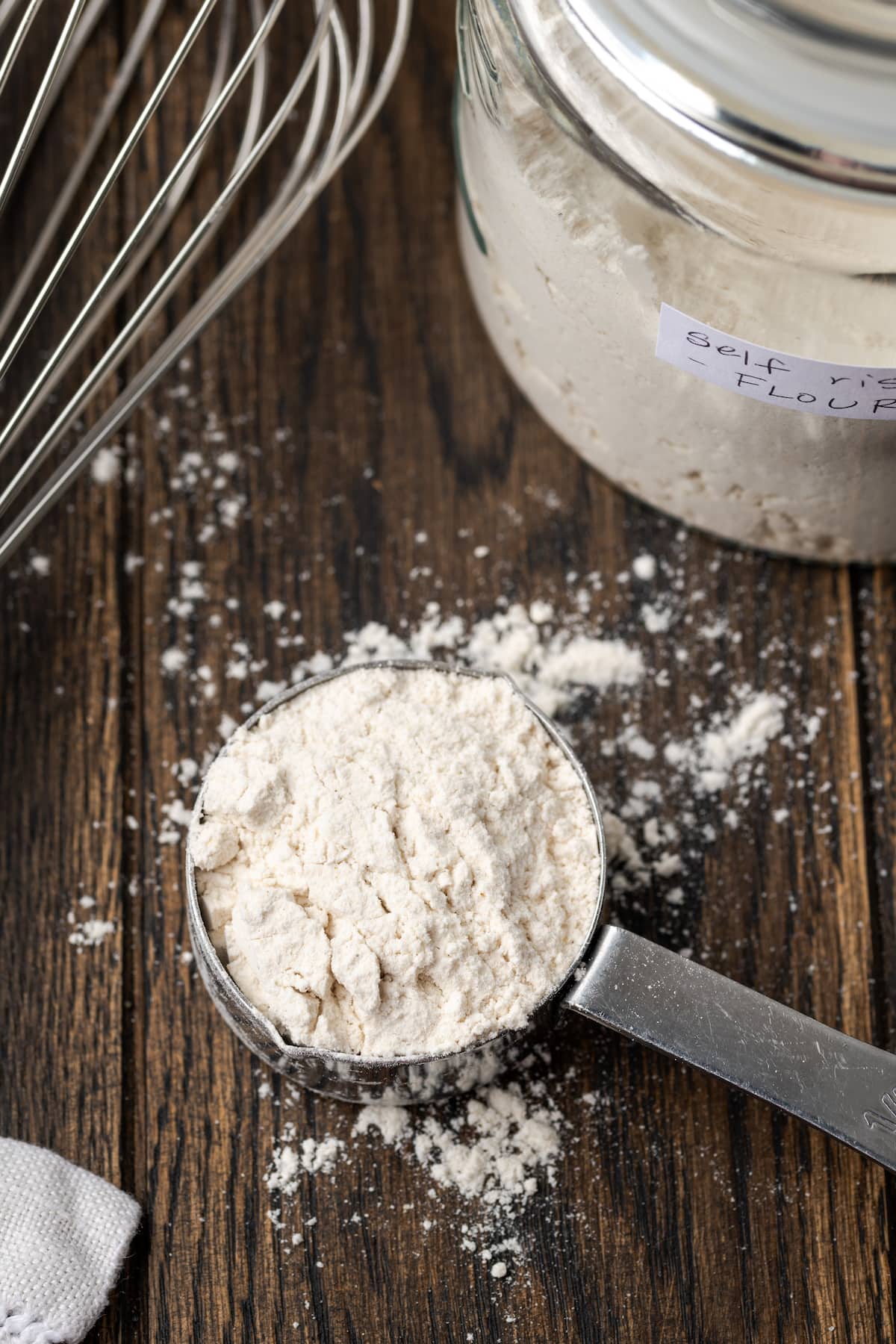
Frequently Asked Questions
No, baking soda, also called bicarbonate of soda or sodium bicarbonate, and baking powder are not the same. Baking powder is made with baking soda, cream of tartar, and cornstarch added. See my baking powder substitute for details.
Self-rising flour is an easy “shortcut” ingredient in many baking since the leavening is already included. It’s especially popular in Southern recipes for biscuits, cornbread, pancakes, waffles, cinnamon rolls, quick breads, and more.
Cake flour is a type of low-protein flour and the key to a soft, tender crumb in recipes like my vanilla cake and chiffon cake. I don’t recommend replacing cake flour with self-rising flour unless a recipe suggests it.
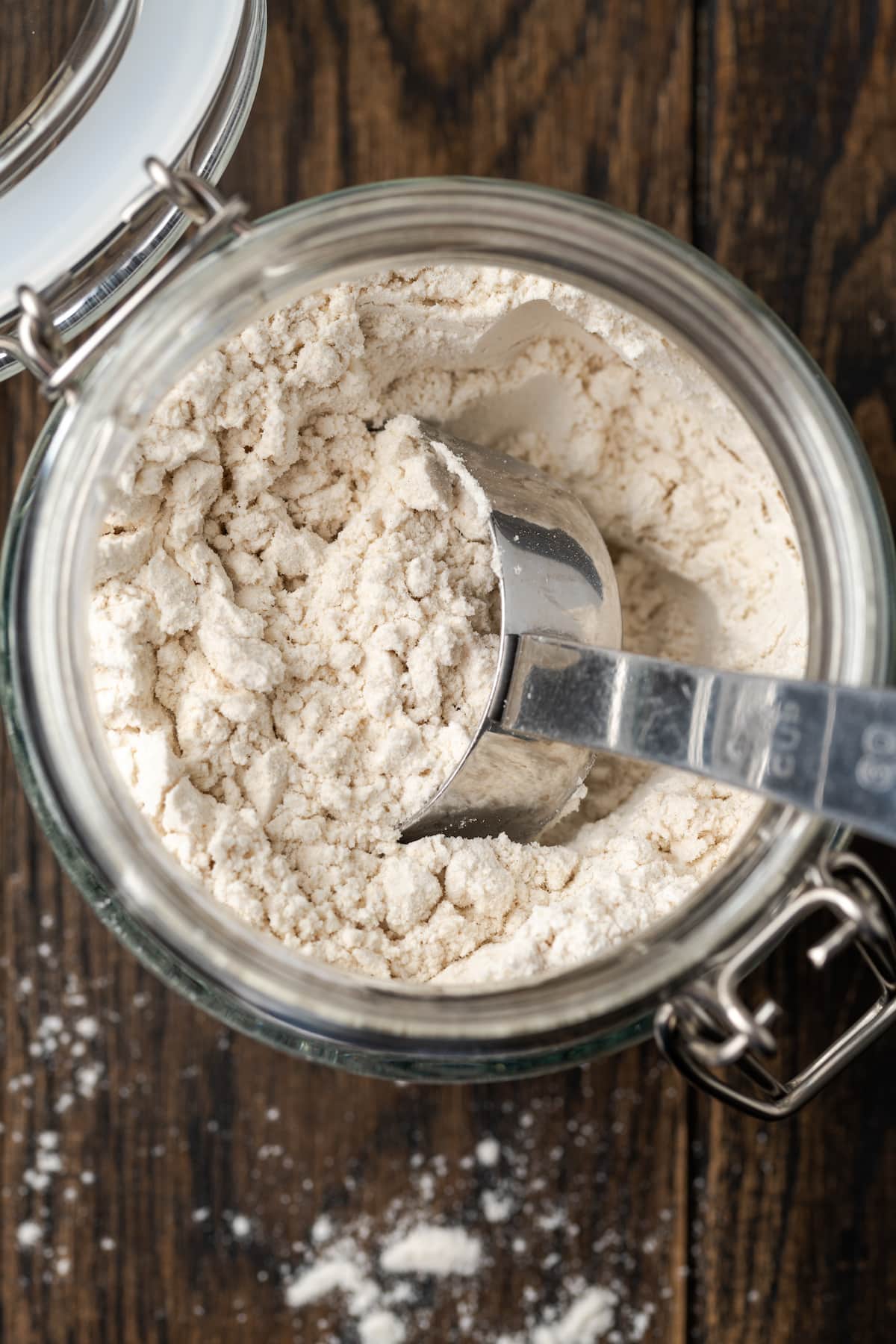
How to Store
Store your flour in an airtight jar or container in the pantry for up to 6 months. Keeping the flour somewhere cool and dry is important so that the baking powder doesn’t activate.
More Baking Tips
- The Best Substitutes for Butter
- Cream of Tartar Substitutes for Baking
- Egg Substitute For Baking
- How to Freeze Cookie Dough
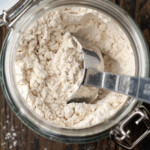
How To Make Self Rising Flour
- Prep Time: 5 minutes
- Total Time: 5 minutes
- Yield: approx. 2 cups
- Category: Baking Tips
- Method: No-Bake
- Cuisine: American
Description
Self rising flour is a staple in loads of baking recipes. Learn how to make self-rising flour from all-purpose flour with this easy, 3-ingredient substitute!
Ingredients
- 2 cups all purpose flour
- 3 teaspoons baking powder
- 3/4 teaspoon kosher salt
Instructions
- In a large bowl whisk all the ingredients together.
Notes
- Store airtight for up to 6 months.
Want To Save This Recipe?
Find more recipes like this:
PIN for later:
